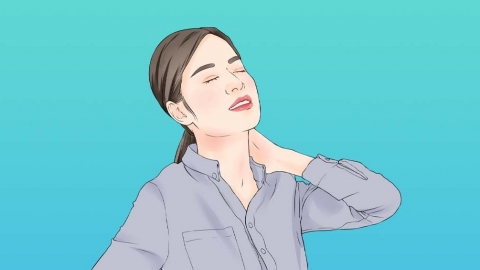What causes weakness and inability to lift the left arm after cervical spine surgery?
In general, the main causes of weakness and inability to lift the left arm after cervical spine surgery include postoperative muscle disuse, postoperative edema compression, nerve root traction injury, spinal cord concussion, and local scar adhesion. If discomfort symptoms occur, it is recommended to seek timely medical evaluation and treatment at a正规 hospital. Specific analyses are as follows:
1. Postoperative Muscle Disuse
Long-term immobilization after cervical spine surgery leads to reduced muscle activity in the left arm, resulting in decreased strength, weakness, and difficulty lifting. Under medical guidance, gradually initiate passive exercises for the left arm, progressing later to active training. Perform 10–15 minutes daily to prevent further muscle atrophy.

2. Postoperative Edema Compression
Surgical trauma can cause neck tissue swelling, compressing the left nerve root and impairing nerve conduction, leading to left arm weakness. Elevate the head of the bed by 15–30 degrees to promote venous return. Follow medical advice for neck cold compresses to reduce edema, avoid excessive neck movement, and monitor symptom changes as the swelling subsides.
3. Nerve Root Traction Injury
Minor intraoperative traction on the left nerve root may temporarily disrupt nerve function, causing weakness and inability to lift the left arm, often accompanied by numbness. Under medical supervision, medications such as mecobalamin tablets, vitamin B1 tablets, and vitamin B6 tablets may be prescribed. Acupuncture and physical therapy may also help. Avoid heavy use or loading of the left arm, and regularly reevaluate nerve function.
4. Spinal Cord Concussion
Transient stimulation of the spinal cord during surgery may cause a concussion effect, affecting motor function in the left arm and resulting in weakness, often accompanied by sensory dullness. Under medical guidance, medications such as dexamethasone tablets, mannitol injection, and citicoline sodium tablets may be used. Bed rest is recommended to reduce stress on the spinal cord; in severe cases, surgical spinal cord decompression may be required.
5. Local Scar Adhesion
During healing after surgery, scar tissue may form in the neck and adhere to the left nerve root, restricting nerve mobility and causing weakness and limited elevation of the left arm. Under medical guidance, medications such as celecoxib capsules, diclofenac sodium enteric-coated tablets, and Huoxue Zhitong capsules may be prescribed. In some cases, scar release surgery may be necessary, followed by enhanced rehabilitation training of the left arm.
In daily life, strictly follow medical instructions regarding neck immobilization and movement after surgery; maintain neck cleanliness to prevent infection; gradually perform rehabilitation exercises for the left arm without overexertion; schedule regular cervical MRI follow-ups to monitor nerve recovery; and seek prompt medical attention if symptoms worsen, so that treatment plans can be adjusted accordingly.




